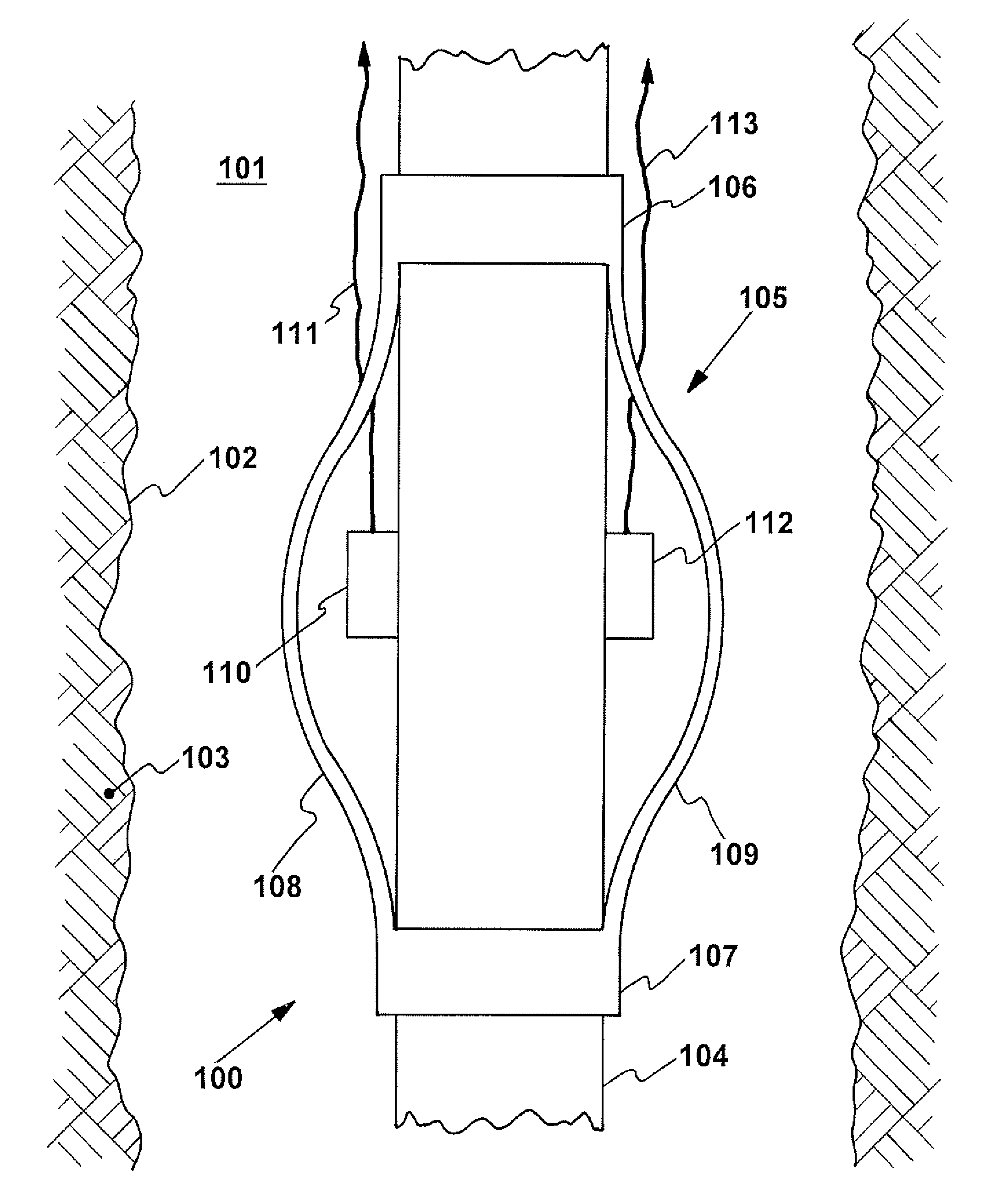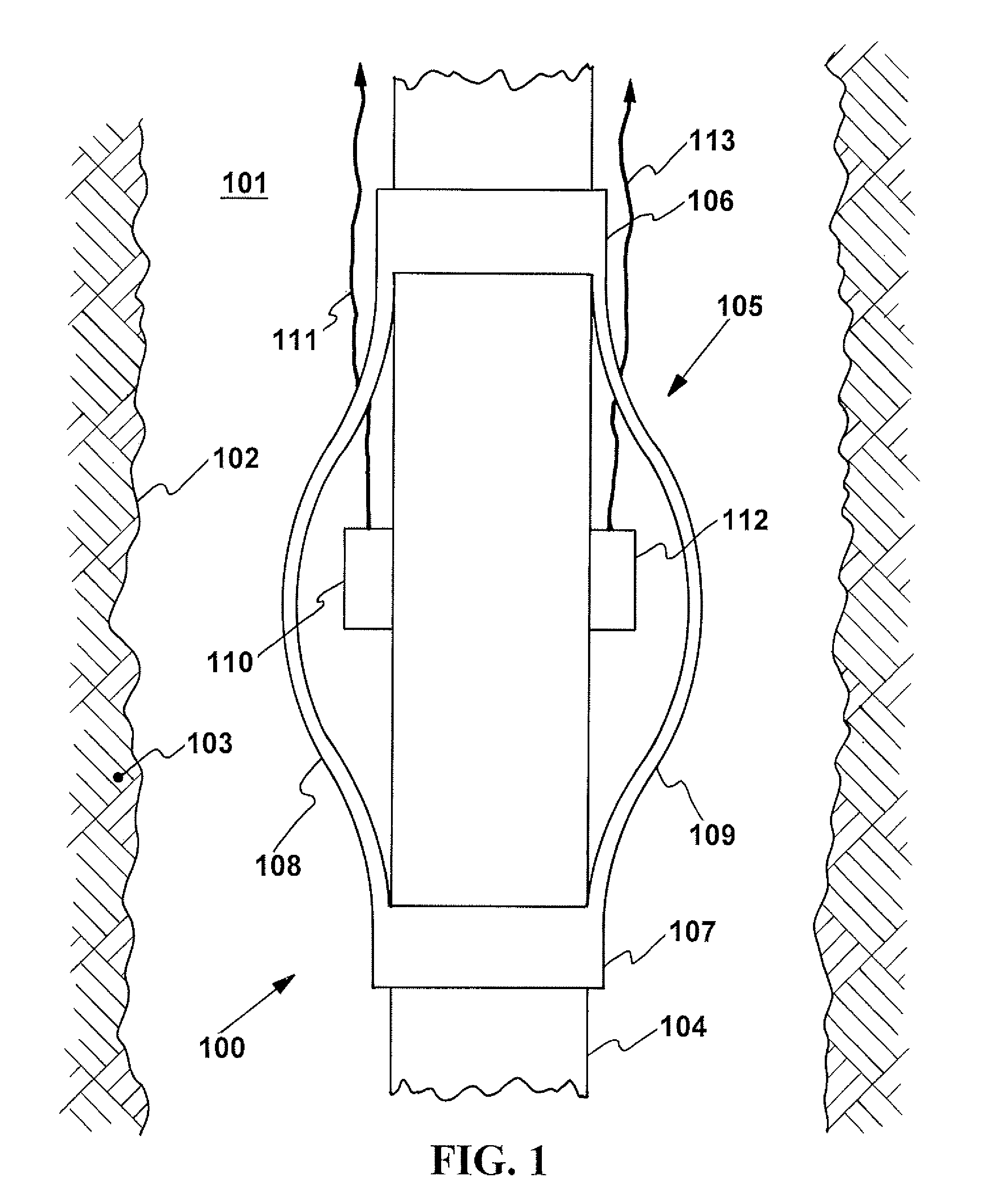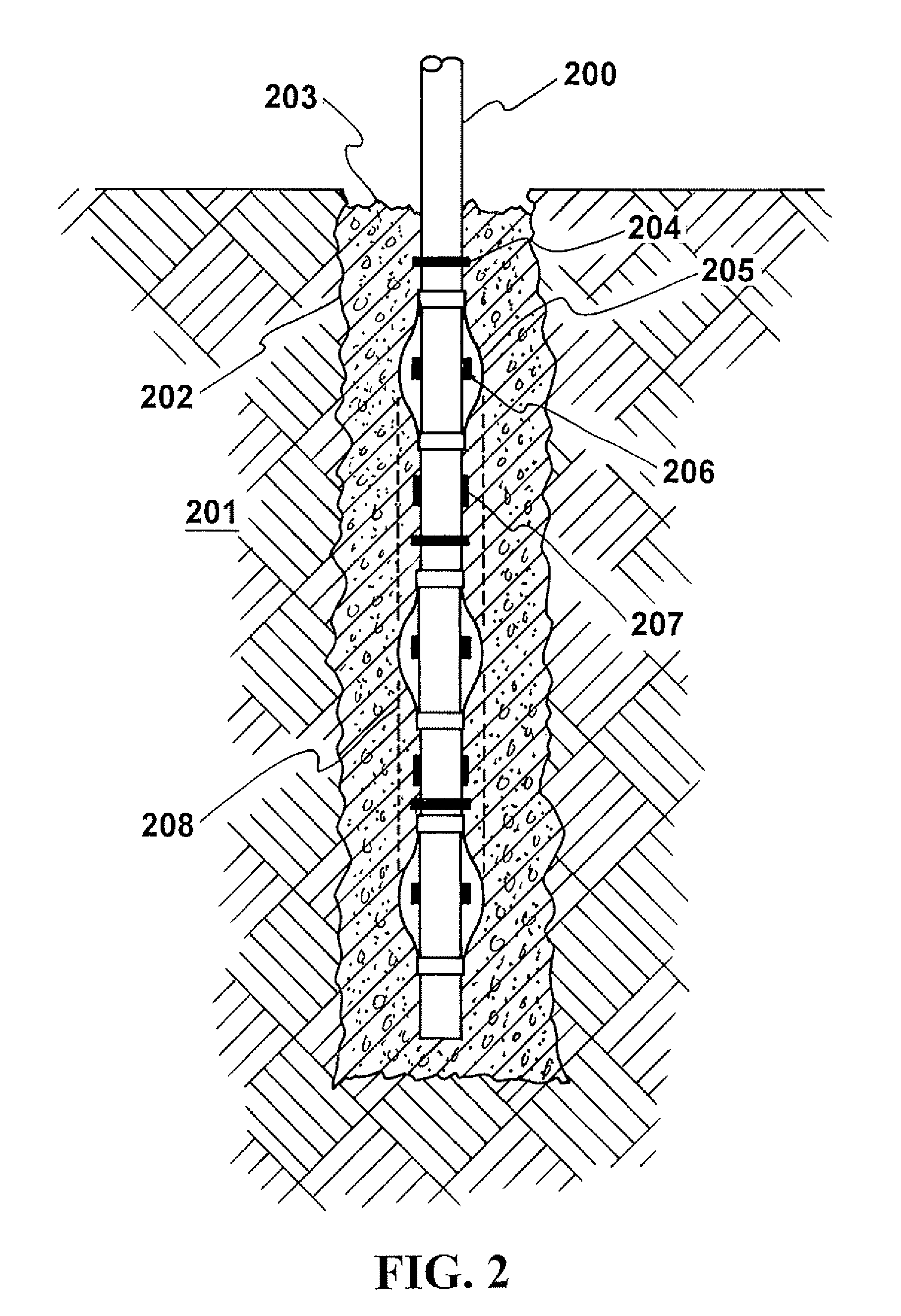Well casing-based geophysical sensor apparatus, system and method
a sensor and well casing technology, applied in the field of oil well monitoring operations, can solve the problems of time-consuming and expensive operations, source and receiver on the surface, and conventional borehole geophysics is less expensive, but has an upfront cost and a downtime cos
- Summary
- Abstract
- Description
- Claims
- Application Information
AI Technical Summary
Benefits of technology
Problems solved by technology
Method used
Image
Examples
Embodiment Construction
[0017]Generally, the present invention is directed to a geophysical sensor apparatus, system, and method using well casings to emplace geophysical sensors at various in-ground emplacement depths in a well borehole, and to subsequently monitor and characterize down-well conditions of, for example, an oil reservoir. As such, the present invention may be described as a “smart casing” for its ability to collect geophysical data, and not function simply as a mechanical structure. Additionally, the present invention includes centralizers fixedly secured to the well casings to protect geophysical sensors and wires / cables from damage which would otherwise be possible when emplacing the sensor-fitted casing down a borehole due to the external location of the sensors and wires to the well casing. Such exterior location is required because in order to operate properly, geophysical sensors must come in contact with the surrounding formation rock, typically achieved by grouting, i.e. cementing, ...
PUM
 Login to View More
Login to View More Abstract
Description
Claims
Application Information
 Login to View More
Login to View More - R&D
- Intellectual Property
- Life Sciences
- Materials
- Tech Scout
- Unparalleled Data Quality
- Higher Quality Content
- 60% Fewer Hallucinations
Browse by: Latest US Patents, China's latest patents, Technical Efficacy Thesaurus, Application Domain, Technology Topic, Popular Technical Reports.
© 2025 PatSnap. All rights reserved.Legal|Privacy policy|Modern Slavery Act Transparency Statement|Sitemap|About US| Contact US: help@patsnap.com



